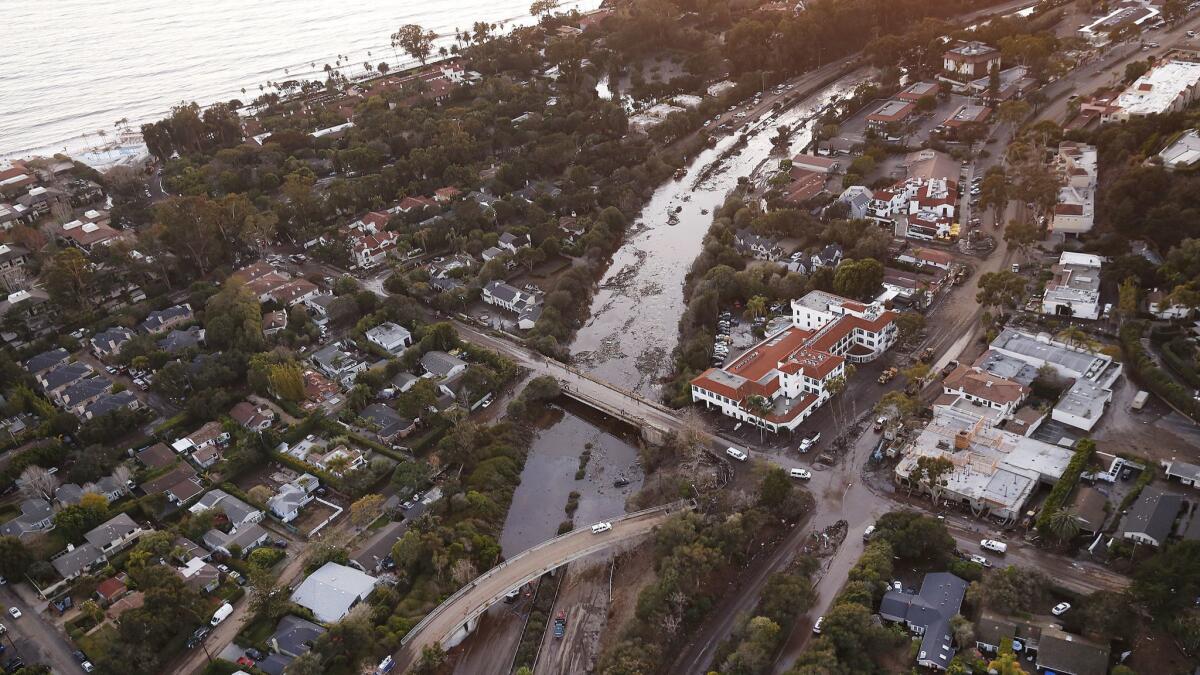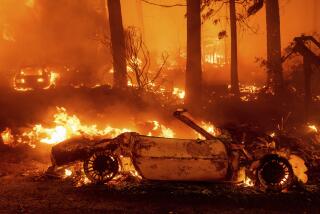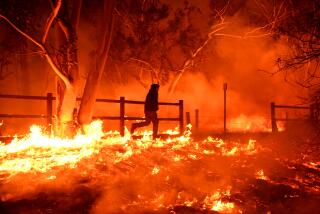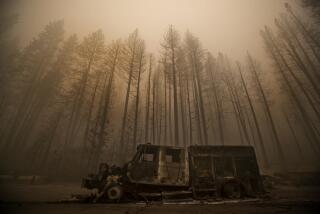Edison sues Santa Barbara County over last year’s deadly mudslides

Southern California Edison — fighting dozens of legal claims related to the Montecito mudslides that followed the Thomas fire — is putting the blame on Santa Barbara County and Caltrans for failing to prepare for deadly debris flows they knew were inevitable.
More than 75 lawsuits have been filed against Edison alleging it ignited the fire, which denuded the slopes above Montecito, making them vulnerable to catastrophic erosion during a heavy storm. On Jan. 9, 2018, as downpours soaked the mountainsides, boulder-filled debris tore through the wealthy town, killing 23 people and destroying 130 homes.
On Friday, the public utility sued the county and state agencies alleging that despite decades of warnings they did not build adequate catchment basins and channels, built low bridges that became choke points and didn’t order historic flood zones to evacuate when the storm was approaching. Edison is seeking to have those agencies share any liabilities it faces from the disaster.
The agencies’ “poor planning and mismanagement spanning from decades prior to the Montecito Mudslides all the way through the final hours … directly and proximately caused all or some of the damages that Plaintiffs now seek to recover from Edison,” the company alleged.
The complaint referenced reports by The Times, the Santa Barbara Independent and other media, which largely documented the failures over which the company is suing.
California’s two largest utilities, Edison and Pacific Gas & Electric, face billions in damages for sparking devastating wildfires in the last few years. PG&E, saying it could be liable for $30 billion if it’s found responsible for the Camp fire in Butte County, announced it would file for bankruptcy this week. Edison has been hit with new claims for November’s devastating Woolsey fire.
In October, Edison conceded its equipment likely started at least one ignition point in the Thomas fire, which scorched 281,893 acres from the hills around Santa Paula to the slopes above Santa Barbara.
Joseph Liebman, who represents 500 clients suing Edison for the fire and mudslide, said fault for the debris flow squarely lies on the utility.
“For Edison to blame the county of Santa Barbara and Caltrans is simply ridiculous,” he said. “They played no part in starting the fire or allowing the fire to spread.”
He said Edison failed to maintain or update its electrical equipment and didn’t power it down despite relentless Santa Ana winds.
“Edison knew this was the longest red flag warning in state history,” Liebman said. “They powered down in the mountains above Palm Springs but did nothing in Ventura or Santa Barbara counties.”
Edison’s lawsuit says fires routinely burn in the Santa Ynez Mountains and make Montecito vulnerable to debris flows, but that the county and state agencies were negligent in allowing development in danger zones and doing little to protect residents and property.
The unincorporated town of Montecito sits on an alluvial fan at the base of the steep Santa Ynez Mountain front. The young range produces vast quantities of sediment and sandstone boulders that, during heavy storms, turn into wrecking balls carried by torrents of mud.
In 1964, after the Coyote fire, the Army Corps of Engineers hastily built basins along two creeks to trap rainy season debris. The catchments are low dams built across the mouth of a canyon. But the military engineers warned the county that these small basins on Cold Springs and San Ysidro creeks would be vastly overwhelmed by a debris flow during a significant storm, according to documents The Times found at the National Archives.
“The danger of loss of life and the menace of public health is great,” said one memo summarizing the Corps’ conclusions in 1969.
The county never built bigger basins on those creeks and did nothing to improve the existing ones. In fact, the county had agreed to remove the two basins by 2026 to allow the passage of steelhead trout, The Times found.
Of the 23 deaths last January, 21 people died below those two dams.
These exact areas had been hit three times before, twice since 1964.
According to Edison’s complaint, “of the twenty-four properties that were hardest hit in just one area during the Montecito Mudslides, four were named in old news reports as having suffered damage in 1926, 1964 or 1969.”
The complaint noted that there was little damage and no deaths in Ventura County, where it said officials had built and maintained a much better flood control system, or in Carpinteria, where Santa Barbara County had its sole full-size debris basin.
The lawsuit alleged:
- County officials failed to enforce its own ordinances while permitting increased development in designated flood zones. They allowed walls and other obstacles that would push debris flows higher and farther from their natural course.
- Planners also permitted more than 150 federal, state, county and private bridges to be built over creeks in hazard zones without ample clearance for debris flows. Many of these bridges became clogged with logs and boulders that diverted the debris flow out of the channel and into homes. The California Department of Transportation was named in the lawsuit for the bridges it built along the 101 Freeway and Highway 192.
- The flood control district did not adequately clean out the “already drastically undersized” basins, which gradually fill up with rock and sediment, reducing their ability to trap debris. While county officials have insisted the 11 basins below the burned area were completely cleaned out, their own surveys show they only had 44% of their design capacity.
- Emergency managers on Jan. 7 switched from evacuating residents based on a flood map to arbitrarily forcing evacuations for anyone living north of Highway 192. They pulled the flood map off the website — but it turned out to be “remarkably accurate.” Everyone who died was in the flood map’s hazard area, but only six were in the mandatory evacuation zone. County spokeswoman Gina DePinto told the Independent that the emergency management director’s “biggest regret is probably that the map that showed the waterways was pulled.”
Edison also named the city of Santa Barbara and the Montecito Water District as defendants. The utility accused Santa Barbara of negligence and poor planning for allowing development in the flood zone along a commercial strip in the city that juts into unincorporated Montecito. The water district was blamed for a ruptured main that released “up to nine million gallons of water,” exacerbating the deluge.
More to Read
Start your day right
Sign up for Essential California for news, features and recommendations from the L.A. Times and beyond in your inbox six days a week.
You may occasionally receive promotional content from the Los Angeles Times.







